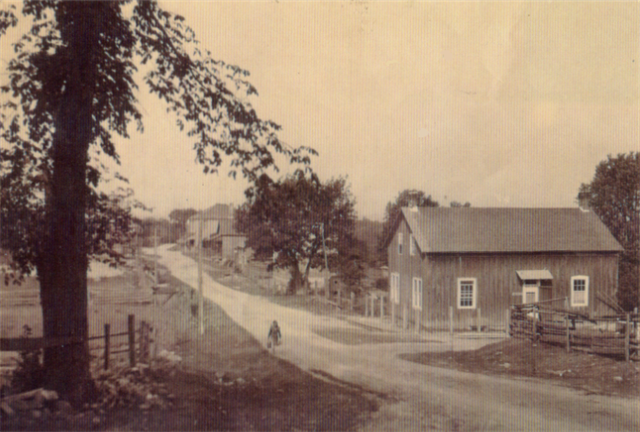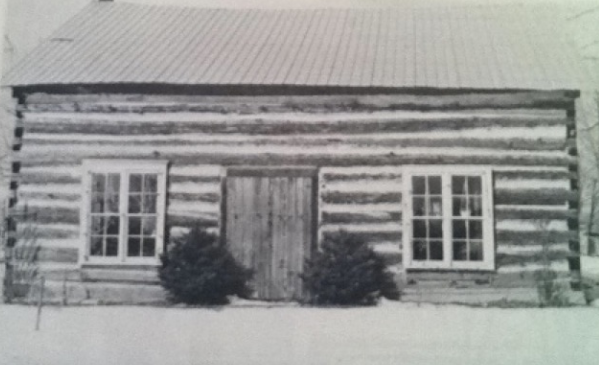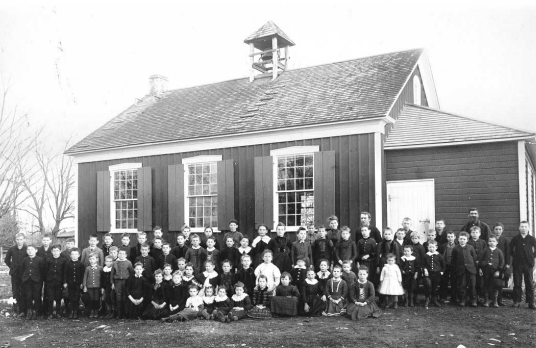This is a series dedicated to our love of history and the wonderful hobby of geocaching; once we saw that other cachers were enjoying our history-oriented caches, this series was the logical next step! Each cache in this series will tell you about a piece of Lanark Highlands history, including stories of the people and events which shaped this region. Once you have read about the history of the location, you will be able to feel the past around you as you explore the site and search for the cache itself.
The caches range in difficulty and terrain, but they should all be quick finds. They are all in quite rural/treed locations where GPS accuracy is often questionable, but none are difficult hides and we have provided helpful hints it you need them. They are all traditional caches, except where ideal locations are inappropriate for a cache, in which case simple redirects are used. For each cache page, though we have written the story, much of the information and many of the photos are courtesy of the Lanark and District Museum; please do not reproduce the story or photos without consent from the author (Matt Stafford) or the Museum. We hope you have fun learning something new and interesting about each location you visit in the Lanark Highlands; happy caching!
McDonald's Corners
The village of McDonald’s Corners, known locally simply as ‘The Hill,’ was once an important center for travelers and, as a result, a thriving community which was home to shops providing all the services necessary to the settlers of the surrounding area. Named after three McDonald families who were among the village’s first inhabitants, McDonald’s Corners was first settled by Scottish pioneers in 1821.

Like most rural villages, McDonald’s Corners was once a self-sufficient community including not only the homes of its many residents, but also general stores, inns for the travelers frequently passing through, shops including the local blacksmith and carriage maker’s businesses, and of course a church and a school. Until relatively recently, the village had two general stores, the Hill General Store and McLellan’s General Store, both important locations where residents of the village and surrounding areas would come to socialize, often spending hours in the store before making their purchases. The village’s location, central to routes on both land and the nearby river, made it one of the busiest in the region and is one of the reasons why McDonald’s Corners is one of the area’s largest villages even today despite the closure of most of its businesses.
This cache is hidden among some of the village’s oldest buildings. For example, the schoolhouse directly beside the cache’s location (pictured below) was built in 1868, the third school in the community and the second on this site. It was originally painted a vibrant red with white trimming around the windows, housing rows of desks for all grades (1 to 8) around a central stove. The school was larger than most in the area and held more students (as many as 70 at one time) but was still presided over by a single teacher. The school is now an active community center called the MERA (McDonald’s Corners Elphin Recreation and Arts) Schoolhouse and is home to a number of artists in its weaving and pottery studios.

The oldest building in the village, pictured to the left and visible from the cache’s location, has served a number of purposes over its lifetime and provides a great reflection of the history of the village itself. Its first function was as a general store in the early years of the village when its owner, Edward Johnson, brought in supplies and delivered goods using his unique mode of transportation, a sled pulled by Newfoundland dogs.
The store was later closed and the building sold in 1866, subsequently becoming an agricultural hall. Agricultural fairs (still held annually in the village today) were held in this building, once producing a show of potatoes that was said to exceed that of any other local fair and to rival even the provincial exhibition. The building was later home to a dance hall (known as Polly Hall after its owner Polly McCullough) where frequent dances were held, attended by settlers from miles around. The dancing continued alongside plays and other musical events when the building housed the McDonald’s Corners Women’s Institute, seeing many more lively nights before it was eventually sold, standing to this day as a private home.

McDonald’s Corners also has a very interesting and tragic connection to the First World War. In the first year of the war, all four sons of one family, the Scotts, volunteered for service in the Canadian Expeditionary Force and travelled to Europe to fight. By 1917 two of the Scott brothers had been killed, leaving the village stunned when it received word that a third, pictured to the right, had been killed at Vimy Ridge. However, this brother was thankfully reported as a prisoner of war just one week later. In that year their father also joined the war effort, training for duty overseas but eventually returning to the village to act as judge in the local exemption tribunals after the introduction of conscription. Just one example of the toll the Great War took on local families, the patriotic Scott family represents a tangible connection between McDonald’s Corners and many of the most important events of the First World War. The names of the two Scott brothers and all other McDonald’s Corners residents killed in the war are forged in metal on the bell in the village’s church.
The people, events, lifestyles, and sacrifices of McDonald’s Corners, once a thriving center of travel in this region, are largely representative of the experiences of many small communities throughout the Lanark Highlands.

Check out the other caches in this series!